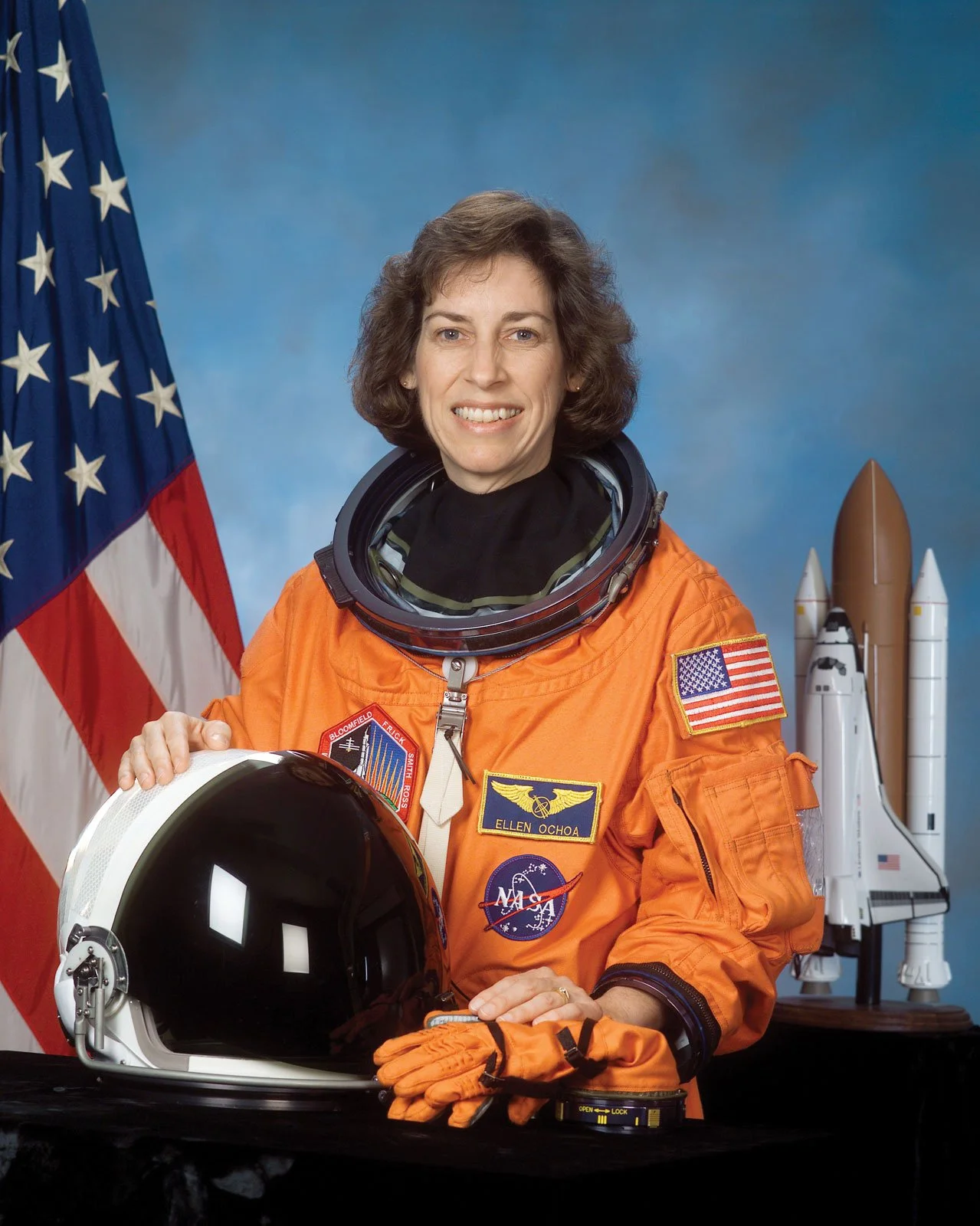3 Inspiring Stories of Women From STEM History
Last Updated: December 20, 2021
1. Ellen ochoa- The First Hispanic Woman To Go To Space
Ellen Ochoa- obtained from Brittanica.com
Early Life:
Dr. Ellen Ochoa was born May 10, 1958, in Los Angeles, California. She studied Physics at San Diego State University and went on to do a Masters and Ph.D. in Electrical Engineering at Stanford University.
Career:
After her doctorate, she worked in NASA’s research center as an engineer. In 1990, she was selected for NASA’s space program and successfully became an astronaut in 1991. In 1993, she became the first Hispanic-American woman to go to space, completing a nine-day mission.
During her time at NASA, she authored several papers about different computer software used for aerospace travel. She retired in 2007 from the space program and took on the role of Deputy Director, (and eventually Director) of the Johnson Space Center, becoming the first Hispanic woman to do so. She was awarded NASA’s Distinguished Service Medal in 2015 for her services.
2. Ada Lovelace —The First Computer Programmer
Early Life:
Ada was born Augusta Ada Byron on 10 December 1815 in London, England. She was raised primarily by her grandmother, Lady Milbanke who had her privately tutored. She was even taught Mathematics- a practice uncommon for women at the time. She displayed a fascination for the working of machines from an early age, spending hours poring over scientific magazines.
Adult Life:
Ada was introduced to Charles Babbage in 1833 by a mutual friend. They immediately formed a kinship over their shared love of Mathematics. At the time, Babbage was working on the ‘Analytical Engine’- an early conceptualization of today’s modern computer.
In 1842, she translated a French article describing the engine, and on request from Babbage, was also asked to expand on it as she was very familiar with its workings. Ada’s article was over three times longer than the original with detailed notes on how the engine could be programmed. The algorithm she proposed is thought to be one of the earliest descriptions of computer software.
Ada died in 1852, at the age of 36 from cancer. Her notes remained vital to the field and were used by Alan Turing in the 1940s when designing the first modern computer. October 10th is official ‘Ada Lovelace Day’ to honor her contributions to the field of computer science and modern technology.
3. Grace Hopper- Co-Creator Of Univac- The First Electronic Computer
Early Life:
Grace Hopper was born on December 9, 1906, in New York City. Educated in private schools, she went on to obtain a degree in Mathematics and Physics from Vassar College and later received a Masters degree in Mathematics from Yale. While pursuing her doctorate, she taught Maths at Vassar College.
Naval Career:
After learning of the Pearl Harbour bombing in 1941, Hopper decided to join the Navy. Initially rejected because of her gender and small stature, she was allowed to join the U.S. Naval Reserve (Women’s Division). She was promoted to Lieutenant in 1944 and soon began to work on ‘Mark I’ - a prototype of an electronic computer, with the Harvard Lab.
Post-war career:
After the war, Hopper remained with Harvard to continue working on developing electronic computers. She was the one who also first used the word “bug” to describe computer malfunctions, and wrote the first computer manual- a document spanning over 500 pages.
In 1949, she joined Eckert-Mauchly Corporation as a head programmer and worked on ‘UNIVAC’ - the world’s first electronic digital computer. She became a distinguished fellow of the British Computer Society in 1973, being the first woman to receive that recognition at the time. After her retirement in 1986, she returned to being a teacher and taught until her death in January 1992. She was posthumously awarded the Presidential Medal of Freedom in 2016 for her contributions to the field of computer science.

